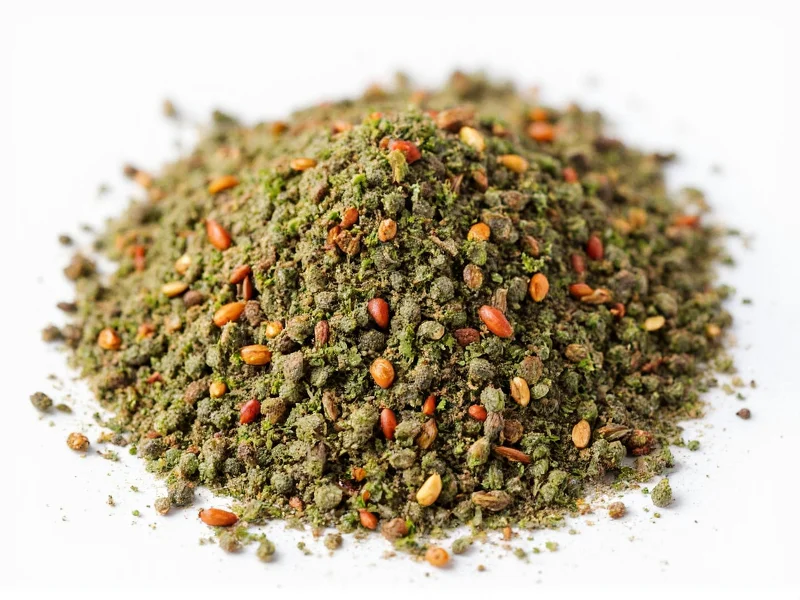Oregano, marjoram, and savory are the closest spice substitutes for thyme. Oregano offers a stronger, earthier flavor ideal for Mediterranean dishes, while marjoram provides a milder, sweeter alternative perfect for delicate recipes. For every teaspoon of fresh thyme required, use 3/4 teaspoon dried oregano, 1 teaspoon fresh marjoram, or 1/2 teaspoon dried savory as direct replacements in cooking.
Thyme's distinctive earthy, slightly minty flavor with subtle lemon notes makes it a staple in kitchens worldwide. When you're mid-recipe and realize you've run out of this versatile herb, knowing reliable alternatives becomes essential. Understanding which spice similar to thyme works best depends on your specific culinary application, available ingredients, and desired flavor profile.
Understanding Thyme's Flavor Profile
Before exploring substitutes, it's crucial to understand what makes thyme unique. Fresh thyme features a complex flavor combining earthiness, subtle mint, and citrus undertones with a gentle floral finish. Dried thyme intensifies these characteristics, becoming more concentrated and slightly woodier. This complexity explains why finding an exact match proves challenging, but several herbs come remarkably close for specific applications.
Top Substitutes for Thyme in Cooking
Oregano: The Bold Alternative
Oregano serves as the most accessible thyme substitute with similar earthy characteristics but greater intensity. Its robust flavor works exceptionally well in tomato-based dishes, grilled meats, and robust stews where thyme would normally shine. When using oregano as a spice similar to thyme, remember to reduce the quantity by 25% since oregano packs more punch. For Italian and Greek cuisines, this substitution creates authentic results without compromising the dish's integrity.
Marjoram: The Delicate Replacement
Marjoram offers the closest flavor match to thyme with a noticeably milder, sweeter profile. This makes it ideal for delicate dishes like fish, chicken, and vegetable preparations where overpowering flavors would dominate. Many professional chefs consider marjoram the best substitute for thyme in recipes requiring subtlety. Use a 1:1 ratio when substituting fresh marjoram for fresh thyme, though dried marjoram requires only 3/4 the amount of dried thyme called for in recipes.
Savory: The Underrated Option
Often overlooked, savory (particularly summer savory) provides an excellent thyme alternative with comparable peppery notes and herbal complexity. Both winter and summer savory work well, though winter savory delivers a more intense flavor closer to thyme. This herb shines in bean dishes, stuffings, and hearty soups. When seeking a spice similar to thyme for traditional European recipes, savory often appears in the same regional herb combinations.
Comparing Thyme Substitutes
| Substitute | Flavor Intensity | Best For | Substitution Ratio |
|---|---|---|---|
| Oregano | Stronger | Mediterranean dishes, tomato sauces, grilled meats | 3/4 tsp dried oregano = 1 tsp dried thyme |
| Marjoram | Milder | Delicate proteins, vegetables, egg dishes | 1:1 fresh, 3/4:1 dried |
| Savory | Similar | Bean dishes, stuffings, hearty soups | 1:1 fresh or dried |
| Herbes de Provence | Variable | French cuisine, roasted vegetables | 1:1 blend |
| Rosemary | Stronger | Roasted meats, potatoes, breads | 1/2 tsp rosemary = 1 tsp thyme |
Cuisine-Specific Substitutions
Different culinary traditions respond better to specific thyme alternatives. For Italian cooking, oregano provides the most authentic flavor profile when thyme isn't available. French cuisine benefits from Herbes de Provence, which typically contains thyme along with complementary herbs like rosemary and lavender. In Middle Eastern dishes, za'atar (which often includes thyme) serves as an excellent alternative, though its distinctive sumac component alters the flavor profile slightly.
Avoiding Common Substitution Mistakes
Many home cooks make critical errors when replacing thyme. Using rosemary at equal proportions creates overpowering results due to rosemary's stronger flavor. Similarly, substituting basil works only in specific tomato-based dishes but fails in most applications where thyme would normally appear. Always consider the dish's cooking time—delicate substitutes like marjoram should be added later in the cooking process to preserve their subtle flavors, while robust alternatives like oregano can withstand longer cooking times.
Creative Herb Combinations
For the most authentic results when seeking a spice similar to thyme, consider blending multiple herbs. A combination of equal parts marjoram and oregano often mimics thyme's complexity better than any single substitute. Adding a pinch of sage or a single rosemary needle to marjoram can enhance the earthy notes missing in pure marjoram. These combinations prove particularly valuable in recipes where thyme plays a starring role rather than a supporting one.
Storage Tips for Thyme Alternatives
Proper storage significantly impacts the effectiveness of thyme substitutes. Dried herbs maintain potency for 6-12 months when stored in airtight containers away from light and heat. Fresh alternatives like marjoram last longer when stored upright in water in the refrigerator, similar to fresh thyme. Freezing fresh herb substitutes in olive oil cubes preserves their flavor for future use as thyme replacements. Understanding these storage techniques ensures your spice similar to thyme remains effective when needed.











 浙公网安备
33010002000092号
浙公网安备
33010002000092号 浙B2-20120091-4
浙B2-20120091-4